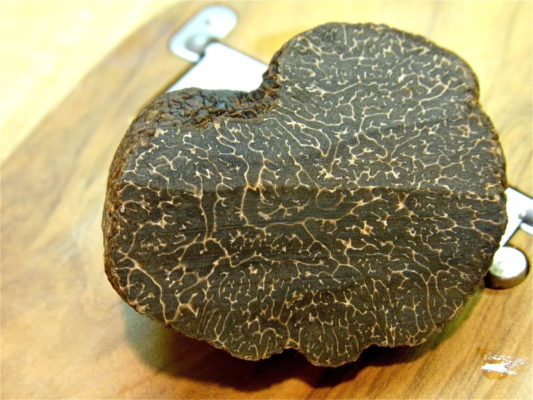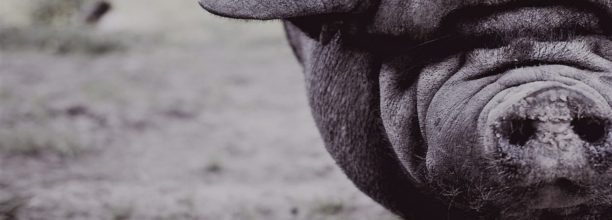

“Whosoever says truffle, utters a grand word, which awakens erotic and gastronomic ideas”
Jean-Anthelme Brillat-Savarin (1755-1826), preface to ‘The Physiology of Taste’ (1825)
Truffles, those incredible little culinary luxuries that almost defy description, one should never pass up an opportunity to smell, taste and commune with the plump little balls of ectomycorrhizal fungi found in the rhizosphere of oak and hazelnut trees.
The merest sliver of a shaving of the hypogeous sporocarp, (fruiting body) of the truffle can transform even the blandest dish into something, exceptional, complex and completely irresistible.
It is almost as if truffles are infused by magical properties and indeed, Ancient Europeans believed that truffles were created by the gods when lightning struck the ground. The Roman philosopher Cicero, (106 BC – 43 BC) called them children of the earth and the Greek essayist Plutarch (AD46-AD120) wrote “Since, during storms, flames leap from the humid vapors and dark clouds emit deafening noises, is it surprising the lightning, when it strikes the ground, gives rise to truffles…”
In ‘Close to Colette’ (1955) the author Maurice Goudeket suggested “Truffles – anyone who does not declare himself ready to leave Paradise or Hell for such a treat is not worthy to be born again.” Whilst his wife, French author nominated for the Nobel Prize in Literature, (1948) Sidonie-Gabrielle Colette, (1873 – 1954) is quoted herself as saying, “If I can’t have too many truffles, I’ll do without truffles.”
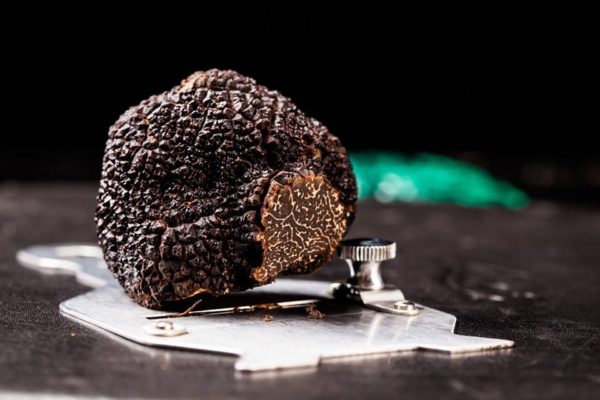

The two godfathers of French fine dining criticism are Jean Anthelme Brillat-Savarin, (1755-1826) and Alexandre-(Balthazard)-Laurent Grimod de La Reynière, (1758-1837).
Brillat-Savarin’s most famous work, ‘Physiologie du goût (The Physiology of Taste), was published in December 1825, just two months before his death and it has never been out of print since.
An interesting and complex character he studied law, chemistry and medicine in Dijon, there was a price on his head during the French Revolution and he fled to Switzerland before moving to Holland and then the brand new country called the United States of America. In the U.S. he earned a living giving violin lesson and was for a time ‘first violin’ for the Park Theatre in New York. He returned to France in 1797 and served for the remainder of his life as a judge for the Court de Cassation, one of France’s ‘Courts of Last Resort’.
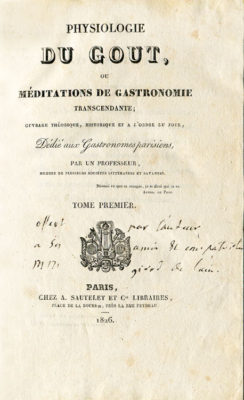

Brillat-Savin called truffles the ‘diamonds of the kitchen’ and he wrote a great many words on truffles, including:
“Whoever says truffle, pronounces a great word, which awakens erotic and gourmand ideas both in the sex dressed in petticoats and in the bearded portion of humanity. This honorable duplication results from the fact that the tubercle is not only delicious to the taste, but that it excites a power the exercise of which is accompanied by the most delicious pleasures.
The origin of the truffle is unknown; they are found, but none know how they vegetate. The most learned men have sought to ascertain the secret, and fancied they discovered the seed. Their promises, however, were vain, and no planting was ever followed by a harvest. This perhaps is all right, for as one of the great values of truffles is their dearness, perhaps they would be less highly esteemed if they were cheaper.
Erotic Virtue of Truffles.
The Romans were well acquainted with the truffle, but I do not think they were acquainted with the French variety. Those which were their delight were obtained from Greece and Africa, and especially from Libya. The substance was pale, tinged with rose, and the Libyan truffles were sought for as being far the most delicate and highly perfumed.
“Gustus elementa per omnia quaerunt.” JUVENAL.
From the Romans to our own time, there was a long interregnum, and the resurrection of truffles is an event of recent occurrence. I have read many old books, in which there is no allusion to them. The generation for which I write may almost be said to witness its resurrection.
About 1780 truffles were very rare in Paris, and they were to be had only in small quantities at the Hotel des Americans, and at the Hotel de Province. A dindon truffee was a luxury only seen at the tables of great nobles and of kept women.
We owe their abundance to dealers in comestibles, the number of whom has greatly increased, and who, seeing that their merchandise was popular, had it sought for throughout the kingdom. Sending for it by either the mail or by couriers, they made its search general. As truffles cannot be planted, careful search alone can obtain it.
At the time I write (1825) the glory of the truffle is at its apogee. Let no one ever confess that he dined where truffles were not. However good any entree may be, it seems bad unless enriched by truffles. Who has not felt his mouth water when any allusion was made to truffles a la provincale.
A sauté of truffles is a dish the honors of which the mistress of the house reserves to herself; in fine, the truffle is the diamond of the kitchen.
I sought the reason of this preference; it seemed to me that many other substances had an equal right to the honor, and I became satisfied that the cause was that the truffle was supposed to excite the genesiac sense. This I am sure is the chief quality of its perfection, and the predilection and preference evinced for it, so powerful is our servitude to this tyrannical and capricious sense.
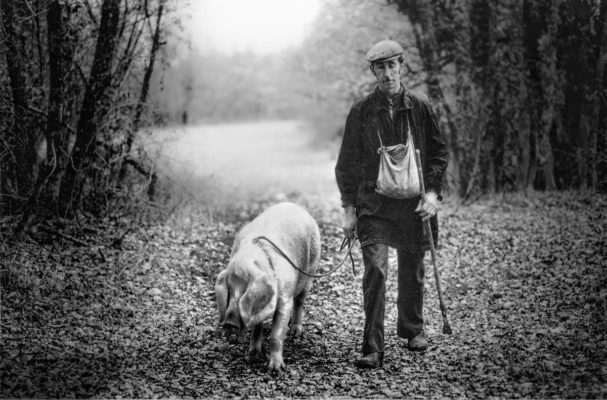

This discovery led me to seek to ascertain if the effect were real or imaginary….
I made ulterior researches, collected my ideas, and consulted the men who were most likely to know, with all of whom I was intimate. I united them into a tribunal, a senate, a sanhedrim, an areopagus, and we gave the following decision to be commented upon by the litterateures of the twenty-eighth century.
“The truffle is a positive aphrodisiac, and under certain circumstances makes women kinder, and men more amiable.”
In Piedmont white truffles are met with, which are very highly esteemed. They have a slight flavor, not injurious to their perfection, because it gives no disagreeable return.
The best truffles of France come from Perigord, and upper Provence. About the month of January they have their highest perfume.
Those from Bugey also have a high flavor, but cannot be preserved.
Those of Burgundy and Dauphiny are of inferior quality. They are hard, and are deficient in farinaceous matter. Thus, there are many kinds of truffles.
To find truffles, dogs and hogs are used, that have been trained to the purpose. There are men, however, with such practiced eyes that by the inspection of the soil they can say whether it contains truffles or not, and what is their quality.”
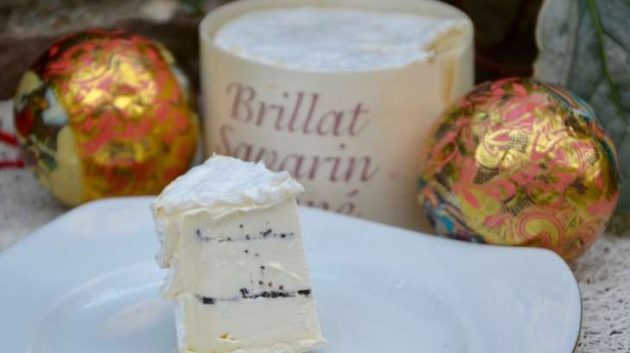

In the 1930’s cheese maker Henri Androuet renamed their ‘Excelsior’ cheese Brillat Savarin in homage to the great gourmand and critic. A luscious, triple cream Brie made in Burgundy and Normandy, it is said that to bring out the best in this cheese one should pair it with the finest French truffles.
Alexandre-(Balthazard)-Laurent Grimod de La Reynière is considered the first public critic of cooking and the first reviewer of restaurants, particularly the ambitious new restaurants that cropped up in Paris during the later part of the eighteenth century and flourished under the Napoleonic regime.
Born into a wealthy family, the young Grimod, who had deformed hands at birth, was largely kept out of public view and in isolation developed a sharp wit and a dark sense of humor. As a young adult he became notorious for throwing elaborate and outrageous dinner parties, one in particular had a pig dressed and seated at the table as host. This sort of behavior was soon the gossip of society and outraged his father, who eventually had him disinherited and confined to an abbey.
Ironically, it was in confinement that Grimod began to learn the art of good eating from the abbot and would eventually open one of the earliest grocery stores, in Lyon. Upon his father’s passing Grimod was able to reconcile with his mother and return to Paris, where he and his close friends would gather once a week to dine at the Hôtel Grimod de La Reynière.
At these feasts Paris’ finest restaurants would send around their best dishes to be judged by the group and reviewed in their monthly ‘Journal des Gourmandes et des Belles,’ which first appeared in 1806.
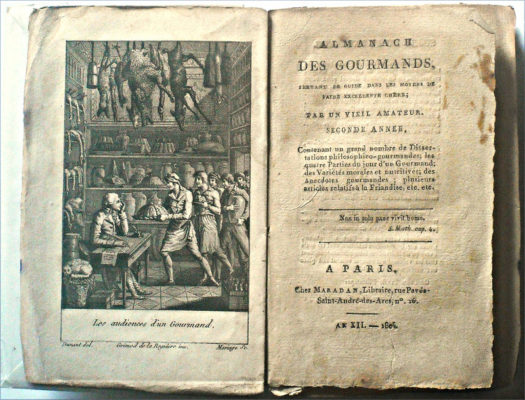

Upon his mother’s death in 1812 Grimod inherited the family fortune, he held his own funeral dinner whilst still very much alive, because he apparently wanted to see who would turn up. He then married his long time devout mistress and retired to a chateau outside Paris. The chateau was previously and somewhat ironically the home of an infamous serial killer who did her victims in by poisoning their food.
His eight volumes of ‘L’Almanach des Gourmands’ are still today, a rich source of culinary knowledge and wonderful insight into the enjoyment of fine dining and French cuisine.
Grimod wrote a great deal on truffles in the Almanach des Gourmands including:
Truffles are one of the greatest godsends that Providence, in its immeasurable bounty, has ever deigned to bestow upon food lovers. This tuber, which is neither vegetable nor fruit, is one of the noblest ingredients of haute cuisine, by virtue of the incomparable flavour it lends to the meat or vegetable dishes to which it may be added. On its own, it is the most luxurious of dishes, and for four months of the year, the dish of choice of the most distinguished gourmets and the prettiest actresses of the Vaudeville theatre (enough said).
They are found in abundance in Italy but these, generally speaking, are white truffles. Truffles from Turin are notable for their distinct aroma of garlic, which is unbearable in a truffle to all but the Piedmontese.
Burgundy, Champagne and Germany, to name but a few, also produce truffles, but in small quantities only, and of such poor quality and so little taste that it would be bestowing too great an honour to even call them by that name.
Here is not the place to comment upon the signs by which one may recognise an area harbouring truffles; suffice to say that pigs are normally used to detect them. Such is the heightened sense of smell of these animals which are already so beloved by gourmands, that they are renowned as the best explorers. We should thus prostrate ourselves before the true inventive genius of these precious friends of mankind, and at least do them the justice of considering them no less useful alive than dead. For without them, truffles would rot, undiscovered, below the earth, providing nourishment merely for worms and flies, instead of for our most illustrious gourmands.
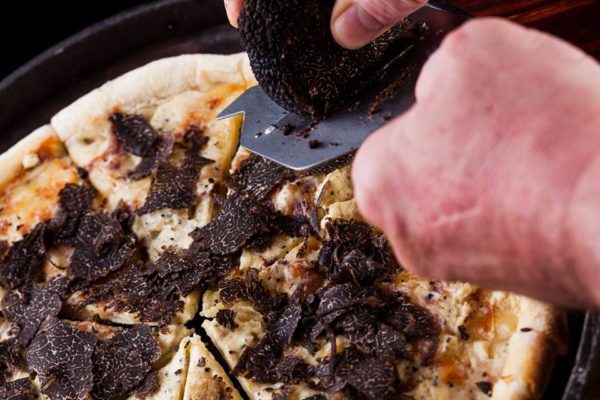

We know of three main truffle varieties: white, red and black. The first is the least well regarded, the second is the most rare and the third is without doubt the best. In fact, it is the only one which is allowed to make its way onto our tables.
Fully matured truffles are difficult to store. Indeed they should only be harvested when they are fully mature as only then do they reach their optimum aroma and taste. They are best preserved by leaving them in their natural coating of earth, rather than by washing them. So we should not complain at having to pay five or six francs a pound for Perigord earth when buying truffles, for it is that very earth which keeps them well-perfumed and in good condition.
Truffles are best eaten fresh, when in season. Those which have been preserved, either in sand, or in oil, vinegar or eau-de-vie, completely lose their aroma and their flavour to these various substances, becoming entirely odourless. And so it is for dried truffles also.
Rather a peculiar attribute of the aroma of truffles is that it aids in the preservation of meats. A turkey or any other type of poultry may be kept fresh for more than a month and a half if stuffed with truffles, where otherwise, it would go off in less than a week.
Truffle perfume is so subtle that a little goes a long way. A pound of this vegetable matter is enough to make an expansive area fragrant with its scent, and yet it will dissipate if subjected to too much heat. So the best chefs are careful not to let the various stews to which they have added truffles boil for too long.
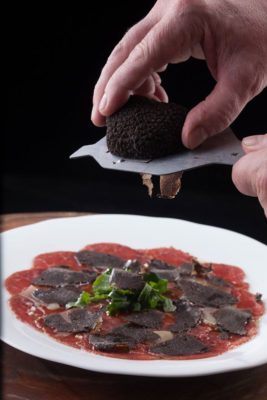

Truffles gently warm the soul, assist in digestion and are an excellent aphrodisiac. They are simply the most distinguished of dishes which opulence can offer up to sensuality.
The fathers of French grande and haute cuisine, Marie Antoine Carême and Georges Auguste Escoffier cooked extensively with truffles in their grandest recipes and yet, it was perhaps an Englishman, born in India during the British Raj who described truffles best. The satirist and author of ‘Vanity Fair’, William Makepeace Thackeray (1811-1863) who wrote:
“Presently, we were aware of an odour gradually coming towards us, something musky, fiery, savoury, mysterious, — a hot drowsy smell, that lulls the senses, and yet enflames them, — the truffles were coming.”
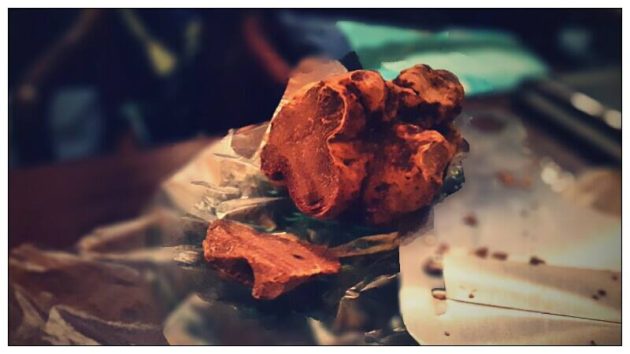

Truffles and Pheromones
All this talk of Truffles, sex, arousal and erotica, is there anything in it? Apparently so, pheromones are secreted chemicals that trigger a response from another member of the same species. In animals, sex pheromones indicate the availability of the female for breeding. Male animals also emit pheromones that convey information about their species and genotype. Pheromone secretions often come with their own scents and odors and some of these smells arouse us.
“They can, on certain occasions, make women more tender and men more lovable.”
Alexandre Dumas (1802-1870), referring to truffles.
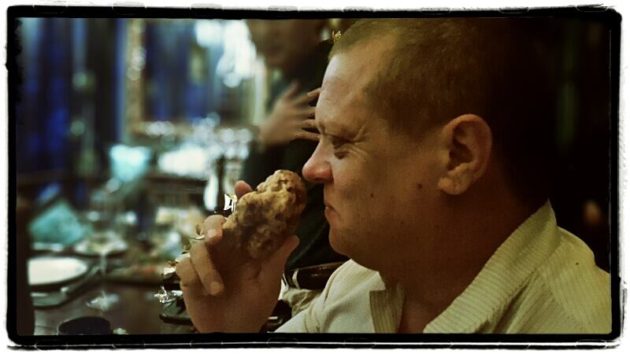

George Dodd is the co-founder of Aroma Science Pty. Ltd. He formed in 1971 the Warwick Olfaction Group at the University, and he remained as its director until he left the University in 1994. He formed Pheromones ltd which is now part of Kiotech Int plc. And worked as a consultant for Lifetime Sciences Ltd. where he developed human pheromone fragrances. George Dodd is one of the best-known scientists working on the sense of smell.
He points out that truffles belong to one of seven families of pheromones, those human body odours by which we establish our sexual compatibility. Six other categories are also found in foods, he says; in caviar, shellfish, ripe cheese, champagne, vintage wine and beer.
The traditional method of foraging for the underground shrooms was the truffle hog, now more commonly replaced by the trusted hound. The reason pigs were so good at rooting out truffles has to do with their sex lives. Researchers in Germany found that truffles contain massive quantities of a substance also synthesized in the testes of boars, who secrete it through their saliva when courting sows.
The earthy, spicy, sweaty leather and musk like scent and other related steroids are also secreted by humans in their armpits through sweat glands and tests carried out in Germany and England have reportedly shown that the substance does have an effect on human beings.
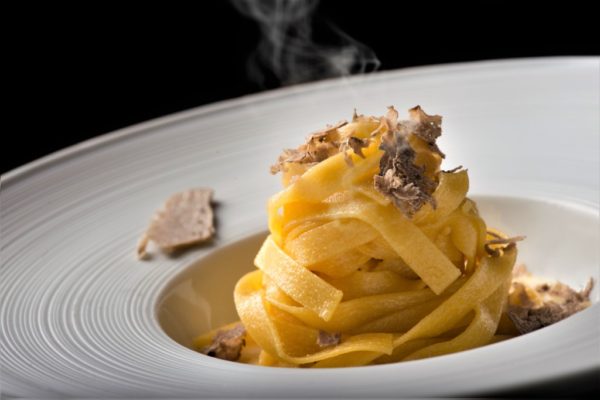

A truffle night
Truffles are seasonal and best eaten fresh, their remarkable aroma pervades everything they are cooked with and especially ingredients high in fat like foie gras, butter, cream, cheese or oils or with rather bland in flavour dishes like rice, pasta or potatoes. Truffles with gently scrambled eggs are incredible and must also be tried. The outrageous expense of truffles is mildly offset by the fact that the merest sliver or shaving is usually enough to impart enough aroma and flavour into the dish.
To preserve the aroma and flavour of the fresh truffle it is usually sliced or shaved onto the dish just prior to serving. Whilst slices of Truffle inserted into the skin of duck, poultry, pheasant or guinea fowl and left for 24 hours prior to roasting with infuse the bird with truffle character.
On the 12th of January 2017, the ever charming Michelle Singson, Area Director of Sales and Marketing for Sofitel Pokeethra Hotel, Phnom Penh invited me to an all truffle, six course degustation dinner, the second in their Gourmet Escapades series at the hotel’s Italian restaurant, Do Forni.
Italian chef Fabrizio Aceti is not only a very accomplished chef, founder of Super-Chef Global consultancy and a respected and admired hotel executive chef for over twenty years; he is also a native of Piedmonte. Piedmonte is in the North West Mountains of Italy and it is here where the finest and most expensive truffles in the world come from, the legendary white truffles of Alba. There is just no Piedmontese chef worth his salt that does not know how to bring out the very best in these little subterranean balls of earthly bliss.
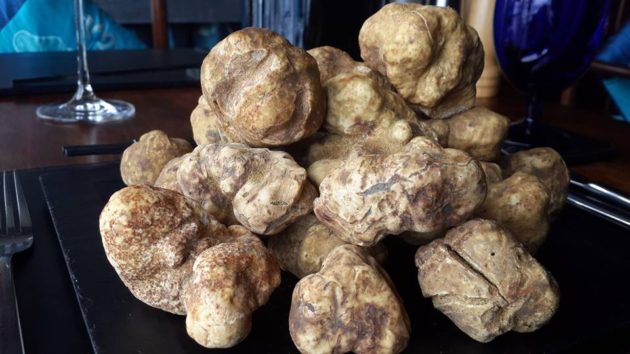

On this night the menu saw every dish utilizing the in-season winter black truffles of Périgord, France, considered by most as the finest black truffles in the world. The menu itself was stacked with classic Italian style truffle dishes, opening with a delicious truffled buratta cheese and Sicilian Caponata.
The Buratta, a creamy mozzarella and stracciatella di bufala cheese, is one of my very favourites, infused with truffle it is divine. Served with the nice freshness and acidity of the Caponata acting as a canvas, this was a delightful opening dish.
Second course was lightly seared scallops, smoked ham, black truffle, a washed rind, taleggio sauce and toasted pistachio, an exceptional offering and one of my favourite dishes on the night. All subtle flavours and divine textures it was a wonderful dish.
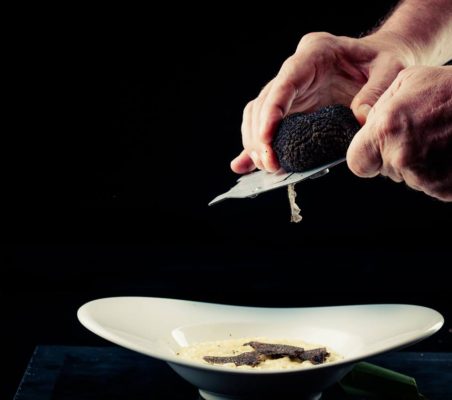

A risotto is almost demanded of any truffle menu, the parmiggiano reggiano cheese and aborio rice infused with truffle is a classic. This one came with a reduction of chicken with thyme and was absolutely delicious.
The main course was a braised beef cheek, polenta and truffle in a red wine and rosemary sauce, rich in flavour, soft in texture and hearty and fulfilling. By this stage of the evening I was really enjoying chef’s menu and flow of the dishes.
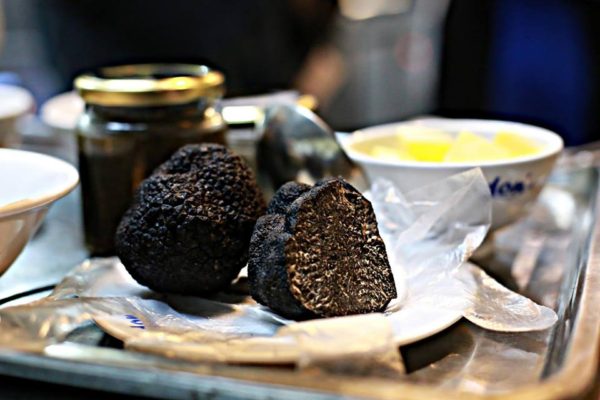

The cheese was a truffled gorgonzola, mild and enjoyable, overwhelmed by the wonderful intensity of the ripe black truffle.
The final course was a dessert featured chestnut Rum and Hazelnut ‘Zuccotto’ cake and espresso ice cream and was really the only dish were the blessed truffle felt a little out of place in the dish.
The Wines
Pairing wine with truffles one realizes that the strong, pungent and all pervasive aroma and flavour of truffle make it the prominent character in any dish however some consideration must be given to whatever ingredient or dish it is served with and the texture and richness of the dish.
A general rule used to be to go local with your wine, Old Burgundies whether red or white for black truffle and aged Barolo or Barbaresco, made from the Nebbiolo grape in Piedmonte for the pungent white truffles of Alba. This lore suggests that the earthy, gamey, spicy characters these wines develop over time match up well with the aromas and flavours of truffle.


On this occasion the truffle dishes were paired to the Tuscan wines on Castello Banfi, very good wines from an excellent producer but non-traditional pairings and a challenge for the winery.
Some say that the Banfi story really begins in the Vatican a little over a century ago, Giovanni Mariani Sr. was born in the United Stated but at the age of 9 after his father’s death returned to Italy to live with his aunt Teodolinda Banfi who was in charge of the affairs of the household of Achille Ratti, the Cardinal Archbishop of Milan and the man who would become Pope Pius XI.
The aunt was said to be like a sister to the Pope since the Ratti family had adopted Teodolinda after he was orphaned. After firm insistence the new Pontiff managed to have Teodolinda put in charge of his household inside the Sistine Palace where she ran his residence, including the kitchen and wine cellar. It was said that Teodolinda Banfi had an amazing palate and developed an exceptional knowledge of the cuisine and wines of Europe. She taught her nephew Giovanni Sr. all about the art and culture of the table in Italy and years later, when Giovanni Mariani Sr. returned to America, (in 1919) and opened a wine importing business in New York City’s Greenwich Village, he named it “Banfi,” in honor of his much loved aunt. Having imparted her passion and knowledge on to her nephew, Teodolinda died in 1938, and is buried inside Vatican City.
Giovanni Mariani Sr. ran a very successful wine importation business in New York sharing with Americans some of Italy finest wines. In the 1960’s, Giovanni retired, leaving the business in the hands of his sons.
John Mariani, Jr. graduated from Cornell University in the 1950s and then pursued two years of viticultural studies in Europe. Upon his return to the US, he followed the path of this father and, together with his brother Harry, assumed control of the firm. Harry Mariani, graduated from Colgate University, started at Banfi Vintners in the late 1950s.
Harry immediately began coordinating the firm’s administrative, commercial and marketing activity, soon becoming the company’s president. In the following thirty years, he played a decisive role in the company’s development from a small family concern to America’s leading wine importer.
John, thanks to his long term strategic vision, became Chief Executive Officer and through his passion and perseverance helped lead the company to the realization of his “impossible dream” the birth of Castello Banfi, in 1978, in the heart of the world’s most celebrated wine region, Tuscany.
Today the family produces some of the Tuscan region’s finest wines and is a name well associated with quality Italian wine throughout the world.
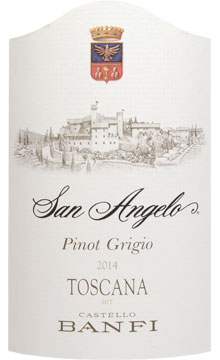

The first wine of the dinner was the San Angelo Pinot Grigio, a very pleasant white that was young and fresh with aromas and flavours of lemon drop candy, persimmon, golden delicious apple and a touch of wild honey, finishing with attractive, powdery acidity.
Second wine served was a Castello Banfi Chianti Classico, a very typical and pleasant Sangiovese with hints of anise, violet, sour cherries, balsamico and bright, intense acidity.
The third wine was the Balnero, a Sangiovese from the southern slopes of Montalcino and the star of the evening, the wine was brimming with rustic charm, tertiary development and earthy, spicy notes, oxidation and sweaty leather, making it the only wine that actually paired brilliantly well with the truffles on the night, served with the risotto it was much better with the beef cheek that followed after.
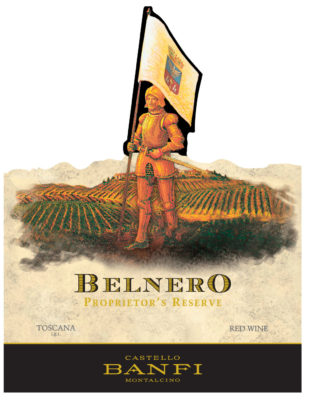

The wine served next was the Summus, a new world, ‘Super Tuscan’ style blend of Sangiovese, Cabernet Sauvignon and Syrah. A pristine and refined wine with delightful aromas and flavours of forest plum, blackcurrant and cherry fruit wrapped in cedar, vanillan and fine oak followed by fine, chalky tannins. It was a truly delightful drink on its own but not especially well paired to its dish.
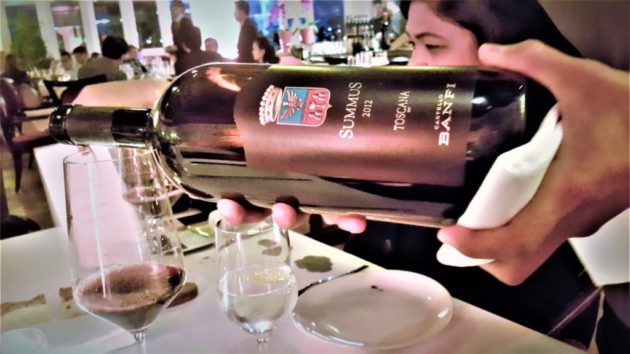

Desserts and coffee were washed down with Banfi grappa; intense, dry and austere its alcohol is clean and penetrating and a lovely way to finish the meal.
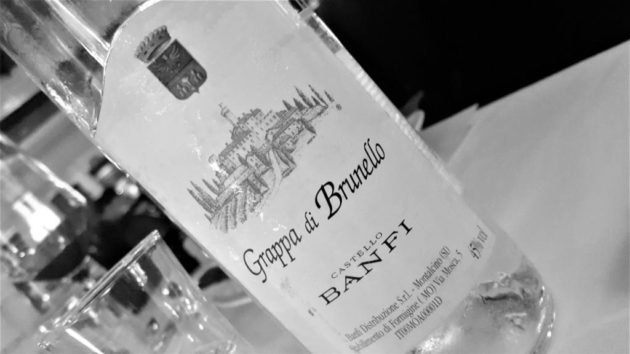

Over all it was an outstanding evening of truffle delights in Phnom Penh, the wines were very good, the truffles exceptional and the menu classical and well executed. Truffles remain rare and exotic delights in the culinary world and truffle dinners in Cambodia are rarer still. I was extremely grateful that I was invited to join the event and delighted that I did, as I left the Sofitel and wandered out into the night I was contented, sated, happy and yes, perhaps even a little horny!
